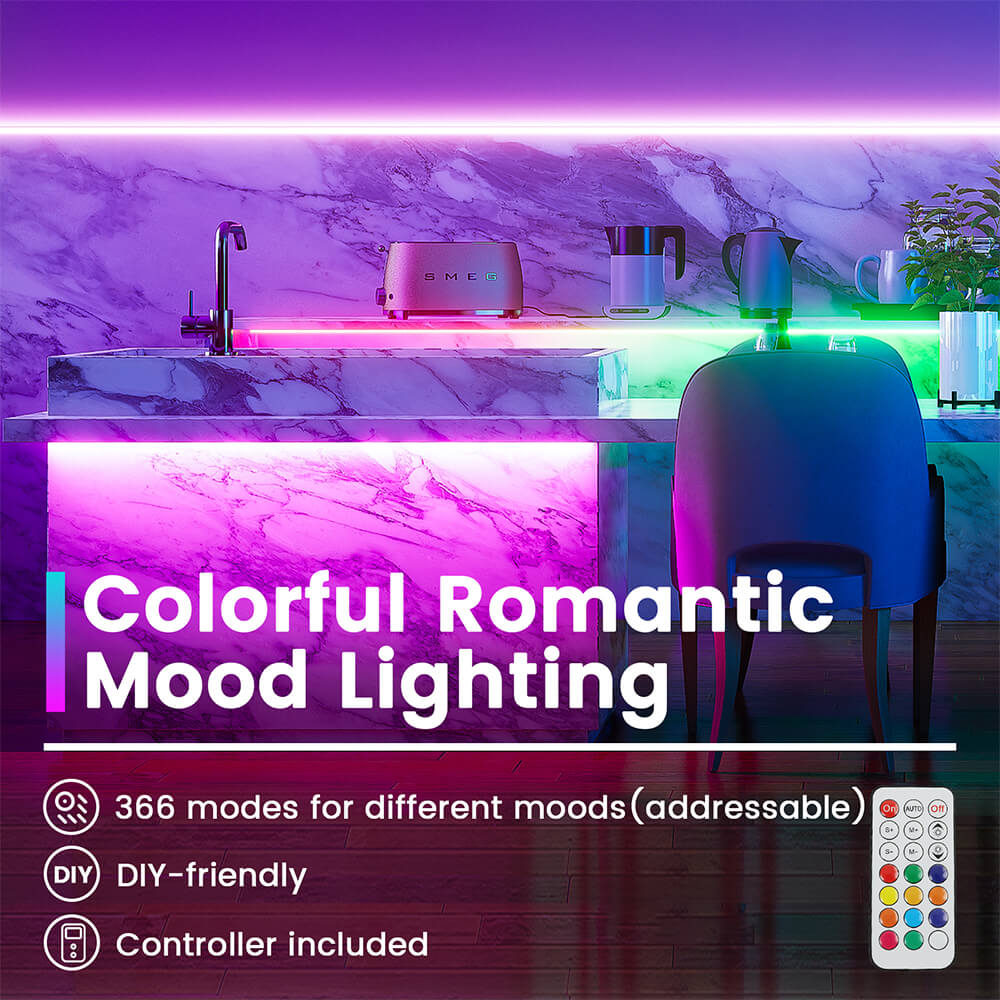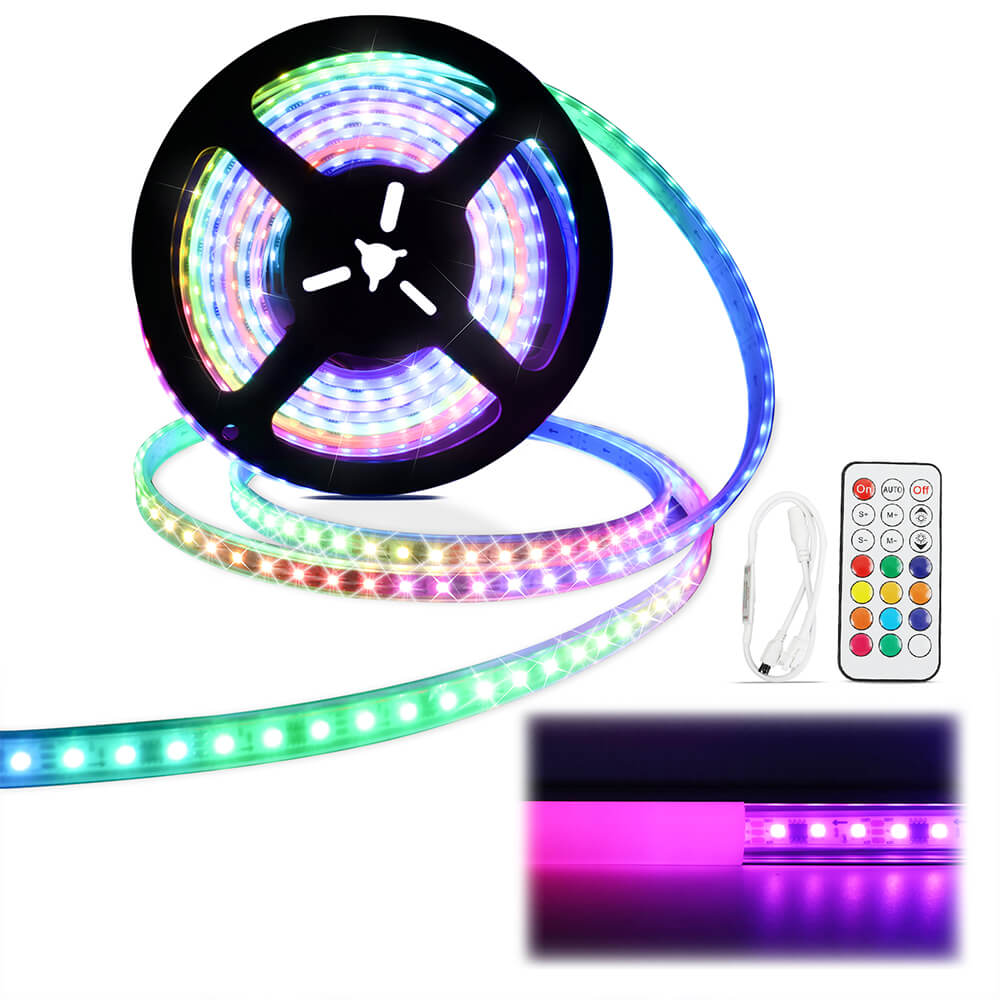What are LED strips?
LED Light Strips are flexible circuits embedded with light-emitting diodes (LEDs) that provide illumination.
What colors of light can LED Light Strip emit?
LED Light Strip can emit a wide range of colors, including but not limited to white, red, green, blue, yellow, and RGB (red, green, blue) color combinations.
What is color temperature?
Color temperature refers to the characteristic color appearance of light emitted by a light source. It is measured in Kelvin (K) and indicates whether the light appears warm (yellowish) or cool (bluish) in tone.
Which color temperature should I choose?
The choice of color temperature depends on the desired atmosphere and application. Generally, warm white (2700K-3000K) creates a cozy and intimate ambiance, suitable for residential settings. Neutral white (3500K-4500K) offers a balanced and natural lighting effect, suitable for offices and commercial spaces. Cool white (5000K-6500K) provides a crisp and energetic illumination, often used in task lighting or outdoor applications.
How long will LED lights last? What is their lifespan?
Their lifespan can vary depending on factors such as usage patterns and operating conditions. However, on average, LED Light Strip can last anywhere from 20,000 to 50,000 hours or even more. This is significantly longer than traditional incandescent or fluorescent lights, making LEDs a durable and long-lasting lighting solution.
How to choose a power supply for LED strips?
It is recommended to choose a power supply with input voltage of 100-240V and output voltage of 12V/24V (according to the choice of the light strip you buy). Power (W) = voltage (V) * current (A), for example, every 1 meter of 96 lights illumination strip requires 12W, 12W = 12V * 1A. It is recommended that a single strip connected no more than 15m, multiple strips connected to the same power supply is calculated according to the total current (A) per meter of power required.
How to install LED Light Strips?
To install LED strips:
Prepare the installation area.
Measure and cut the LED Light Strip(To cut where there are solder joints).
Connect the LED strip to the controller and power supply.
Test the lights.
Peel off the adhesive backing.
Stick the LED strip onto the desired surface.




-1.jpeg?w=1000&h=1000)
-1.jpeg?w=1000&h=1000)
.jpeg?w=1000&h=1000)

.jpeg?w=1000&h=1000)



